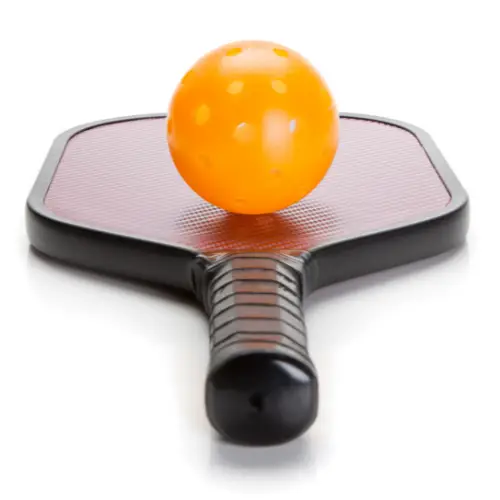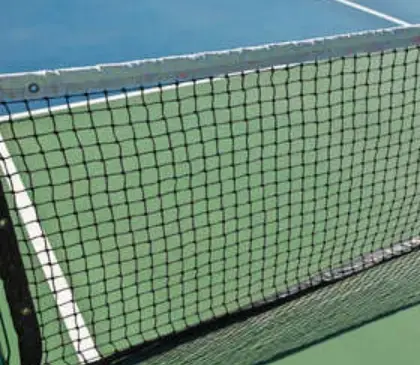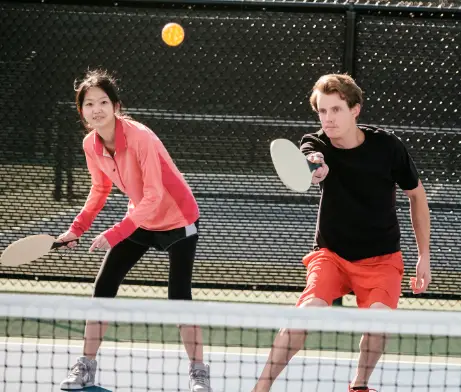As pickleball gains popularity across the country, players are encountering a variety of court conditions that can present challenges during play. One common issue occurs when the playing surface is bumpy, uneven or rough. If you find yourself in this situation, it can be frustrating to adapt your game to the conditions, but there are some strategies you can use to adjust your play and still enjoy the sport.
In this article, we’ll examine the common ways players can adapt their game when playing on a bumpy or uneven court. We’ll also explore the reasons for these issues and look at potential solutions to improve court conditions in the future.
Why is the court bumpy or uneven?
Before we jump into strategies for playing on a bumpy court, it’s worth examining why this issue occurs in the first place. There are several potential causes for an uneven or rough playing surface that can affect pickleball, including the following:
– Poor quality construction: Some courts are simply built poorly from the beginning, with an uneven base or inadequate asphalt thickness.
– Natural settlement: Over time, due to soil conditions underneath the court, some areas may settle more than others, leading to unevenness.
– Tree roots: Trees growing near or beneath the court can cause the asphalt to shift and crack, creating bumps and other surface issues.
– Weather conditions: Extreme heat, cold, or moisture can all cause the asphalt to expand and contract, leading to cracking and unevenness.
Unfortunately, there’s not always a quick or easy solution to these problems. In some cases, the best course of action may be to simply accept the conditions you’re dealing with and adjust your game accordingly.
Change your attitude and approach
The first adjustment you can make when playing on a bumpy court is to change your attitude and approach. Accept that the court is not perfect, and that both you and your opponents will have to adapt your game accordingly. This can help you feel less frustrated and more focused on the game at hand.
In addition, be prepared to make adjustments in your swing and approach to the ball. Shots that might normally be easy to execute may not be possible on a bumpy surface, so be prepared to think creatively and try new shots.
3. Adjust your footwork
Another key adjustment to make when playing on a bumpy court is to change your footwork. Because the surface is uneven, you may find that your usual stride or pace is disrupted. Focus on taking smaller steps, or even shuffling your feet, to adjust to the bumpy terrain. This can help you maintain your balance and control over your shots.
4. Use a softer touch
On a bumpy court, your shots are more likely to bounce unpredictably. This means you’ll need to focus on using a softer touch when hitting the ball, especially on shots that require finesse like drop shots or dinks. By hitting the ball lightly, you can reduce the amount of force that’s transmitted back to you by the uneven surface, helping you maintain control over your shots.
5. Keep the ball low
Another strategy to consider when playing on a bumpy court is to keep the ball low. This can be challenging to execute, but by hitting the ball closer to the ground, you can reduce the effect of the uneven surface on the ball. Aim for shots that travel in a flat, low trajectory as much as possible, and avoid shots that require a high arc or loft.
6. Build better courts
While adapting your game to different court conditions is an important skill for any pickleball player, ultimately, we want to see more high-quality courts that provide a consistent and safe playing surface. To achieve this, communities need to invest in building better pickleball facilities that are designed and constructed with quality in mind. This might include using the best materials, investing in proper drainage, and ensuring regular maintenance and repair.
By prioritizing pickleball infrastructure development, we can create a more welcoming and enjoyable sport for players of all ages and skill levels, regardless of the playing surface.
Conclusion
In conclusion, playing pickleball on a bumpy court can present challenges, but with the right approach and some adjustments, it is still possible to enjoy the game and improve your skills. To mitigate the impact of the bumps, it is important to focus on maintaining good footwork and balance, as well as adapting your shots to the conditions. Taking shorter, controlled swings and using soft shots like dinks and drops can help you maintain control and accuracy. Additionally, communication and teamwork with your partner become even more crucial on a bumpy court to anticipate and adjust to the unpredictable bounces. With practice and a positive mindset, you can adapt to the unique demands of a bumpy court and continue to have fun and excel in the game of pickleball.







